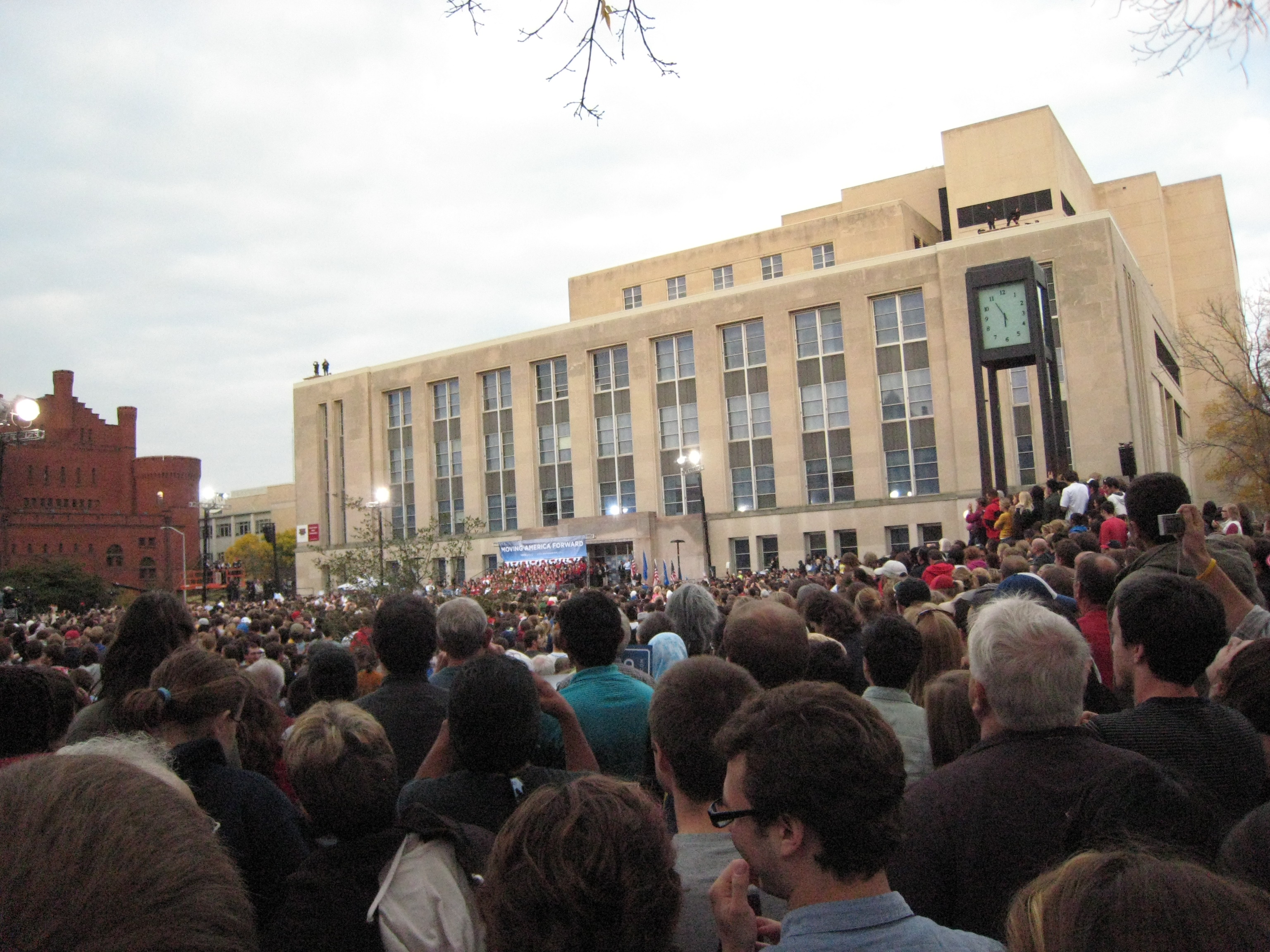When President Obama came to UW-Madison, I don’t think he – or anyone else for that matter – quite expected the turnout. And while the wait was long – the line stretched for 1.2 miles – I’m really glad I went.
But after these difficulties, it was great hearing the speakers (being short, I didn’t see much of anything). I thought Feingold in particular, who apparently was a last-minute addition to the line-up, gave a good speech. There are a few things I found interesting across all three of the “political” speeches (Feingold, Barrett, and Obama):
- No specific opponent, beyond “Republicans,” was ever mentioned. I thought the move smart – how many people there would know who Feingold or Barrett are running against? But at the same time, Feingold’s refusing to link Johnson (who he trails by double-digits in some polls) by name to the Republicans he’s attacking, may allow Johnson to assume the mantle of “outsider” and avoid links to damaging Republican policies.
- While all three of the political speakers talked a lot about the failed Republican policies, they were very careful to distinguish the Republicans in Washington from regular Republican voters, who may be also unhappy with Republicans in Congress. This attempt at outreach was interesting, but, in my opinion, not very effective.
- There were a lot of sports metaphors! We were told many times that we needed to stay “fired up,” that Republicans were “celebrating in the endzone” but the game wasn’t over, and Barrett claimed that democracy is “the ultimate participatory sport.” I found the endless sports metaphors overdone, and wondered if they were tailored for a younger crowd or whether they have been mainstays at other Democratic events.
- The speakers also talked a lot about the Citizens United decision (which allows corporations to spend unlimited amounts of money on political ads) and Democrats’ attempts to fight back. I found this focus surprising because I doubt many of the people in the audience know the implications of the decision. Indeed, even one of my friends, who I consider pretty well-informed about politics, had to ask what it was about. With all the big issues being talked about, I found their repeated mention of an issue unlikely to hold much sway among a crowd of mostly young people puzzling.
- Finally, the inevitable and unceasingly exhortions to all of the attendees to vote dominated. We were told that apathy and indifference would allow the other side to win, Barrett claimed that of those not likely to vote, 75% supported Obama’s policies, and that with turnout like 2008, Democrats would succeed. The most successful of these encouragements, in my opinion, was not Obama, but Barrett’s reflection that the ability to forget how bad the economy was two years ago was good for the American psyche but that we should not forget whose policies put is in this position. The contrast was interesting and provocative – and brought something new to this often-rehashed idea in 2010.
Of course, Obama’s speech was the highlight of the evening. And while the focus of his speech was many of the same points as above, I thought the high point of the 40 minute speech actually came about 10 minutes in, when he had the crowd really fired up, talking about the partisan politics and the party of “no.” And while the speech overall was compelling, there were definitely points where his narrative seemed lost – such listing policies that are less well-known. Some of his biggest successes seemed to come when he talked about “facts” – which he said the other side isn’t always interested in, about Republican tax cuts for the rich, and his focus on health care reform and college loans (tailored for this audience). And his joke towards the end – when in a car (which he’s used as a metaphor for the country), you put it in “D” to go forward and in “R” to go backwards – encompassed his themes for the night.
Of course, an interesting question remains: will the speech fulfill its purpose? The clear purpose of the event was getting young people to the polls to vote for Democrats. According to madison.com, 26,000 attended yesterday’s speech, but will all of those people vote in the midterms? This article suggests only some people who attended will vote. It’s disheartening that even those people willing to wait over 4 or 5 hours in line to hear the president speak – obviously among the most engaged and interested youth – still may not take the “time” to vote and make their voices heard.

Pingback: I approve this message: Applauding Russ Feingold « Emily K Vraga